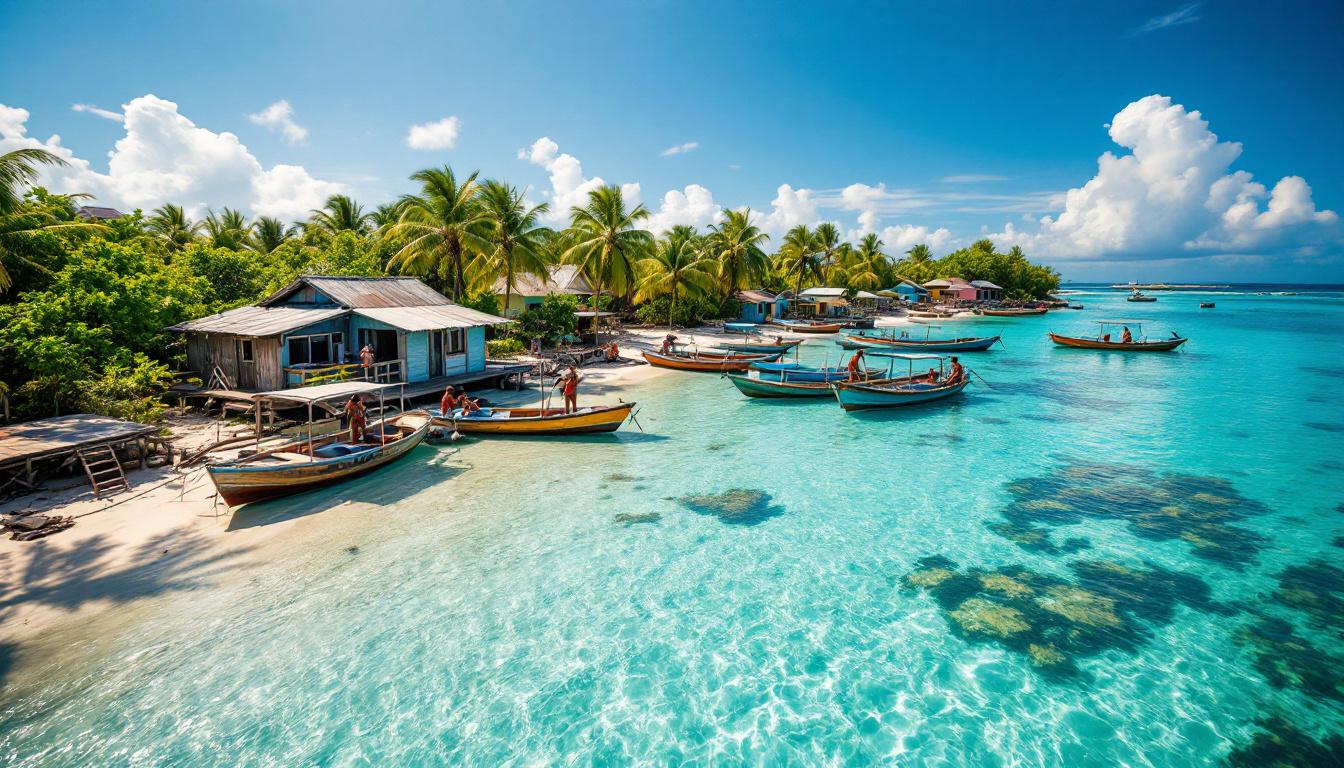Seventy kilometers off Nicaragua’s Caribbean coast, 6,000 islanders live on two specks of land that most maps barely acknowledge. The Corn Islands—Big Corn and Little Corn—represent everything mass tourism destroys, and their fishing communities know it.
These aren’t your typical Caribbean paradise postcards. Here, Creole fishermen still dive for lobster using techniques passed down through generations, speaking English with lilting Caribbean accents that tell stories of pirates, shipwrecks, and a way of life under siege.
The locals have watched nearby Roatán transform into cruise ship chaos and Cozumel become an all-inclusive wasteland. They’ve seen what happens when paradise gets “discovered.” That’s why many residents actively discourage tourism promotion, preferring their $30-per-day fishing economy over resort development that would price them out of their ancestral home.
The fishing community that time forgot
Traditional lobster diving still defines island rhythm
At dawn, weathered boats head toward coral reefs that have sustained families for centuries. Local divers descend 60 feet without modern equipment, following techniques their grandfathers taught them. This isn’t tourism theater—it’s survival, and visitors often interrupt critical fishing cycles that determine whether families eat well or struggle through lean months.
Creole culture faces extinction from outside influence
Elder islanders remember when Little Corn had 700 residents and zero hotels. Today, over 20 accommodations crowd the tiny island, most owned by foreigners who’ve never learned local customs. Traditional Creole festivals now compete with beach parties, while authentic island recipes get replaced by “international cuisine” that satisfies tourists but erases cultural identity.
Environmental protection meets tourism resistance
Coral reefs suffer from increased boat traffic
The islands boast some of the Caribbean’s healthiest barrier reefs, home to nurse sharks, sea turtles, and pristine coral gardens. But local fishermen report declining catches near popular diving spots where tour boats anchor carelessly. Each additional visitor increases pressure on marine ecosystems that provide both tourism appeal and fishing livelihoods.
Climate change threatens traditional island life
Rising sea levels already claim beachfront homes, while changing ocean currents disrupt fishing patterns locals have relied on for generations. Community leader Vilma Gómez warns that increased development makes islands more vulnerable: “The sea could swallow it entirely after contaminating the water sources and arable lands.”
Community-controlled access preserves authenticity
Limited infrastructure maintains natural barriers
No direct international flights reach the Corn Islands—visitors must fly to Managua, then connect through tiny domestic planes or take boats from Bluefields. This 70-kilometer isolation isn’t accidental; it’s natural protection that locals don’t want improved. Better access means more tourists, and more tourists mean less authentic community.
Seasonal fishing cycles limit tourism windows
Smart visitors arrive during December through April when fishing pressure lightens and communities welcome modest tourism income. But many locals prefer the rainy season when few outsiders visit, allowing traditional life to continue without constant interruption from camera-wielding strangers seeking “authentic” experiences.
Economic balance between survival and preservation
Tourism provides necessary income but threatens culture
Young islanders face impossible choices: embrace tourism jobs that pay better than fishing, or preserve cultural practices that barely provide subsistence living. Budget guesthouses charging $15 nightly offer compromise—income without resort-level intrusion—but even modest tourism changes community dynamics when outsiders outnumber locals during peak months.
Local businesses maintain community ownership
Unlike Roatán where international chains dominate, Corn Island businesses remain largely community-owned. Family-run restaurants serve fresh lobster and traditional rice-and-beans, while local guides offer reef tours that emphasize conservation over entertainment. This economic model works only when visitor numbers stay manageable.
The Corn Islands represent a crossroads every authentic destination faces: embrace tourism’s economic benefits while risking cultural extinction, or protect traditional life at the cost of modern opportunities. For now, the fishing communities maintain control, but they know each travel article and social media post brings them closer to the tipping point where their paradise becomes everyone else’s playground.
If you visit, remember you’re entering someone’s home, not your personal escape. Sustainable Caribbean travel means respecting local wishes, supporting community-based tourism, and understanding that some places are worth more when left largely undiscovered.
Essential information for respectful visitors
How do I reach the Corn Islands without contributing to overtourism?
Fly into Managua, then take La Costeña airlines to Big Corn Island ($120 round-trip). Stay in locally-owned accommodations and eat at family restaurants rather than foreign-operated businesses. Visit during shoulder seasons when your presence supports rather than overwhelms the community.
What activities support the local fishing economy?
Book reef tours with local fishermen-guides who combine tourism with traditional knowledge. Buy fresh seafood directly from fishing families, and avoid activities that compete with fishing grounds during peak catching seasons. Responsible diving practices ensure reefs remain healthy for both tourism and fishing.
How can I experience authentic culture without intruding?
Learn basic Creole English phrases, respect fishing schedules, and participate in community activities when invited rather than seeking them out. Purchase local crafts and support cultural preservation projects that maintain traditions rather than performative experiences designed for tourists.
